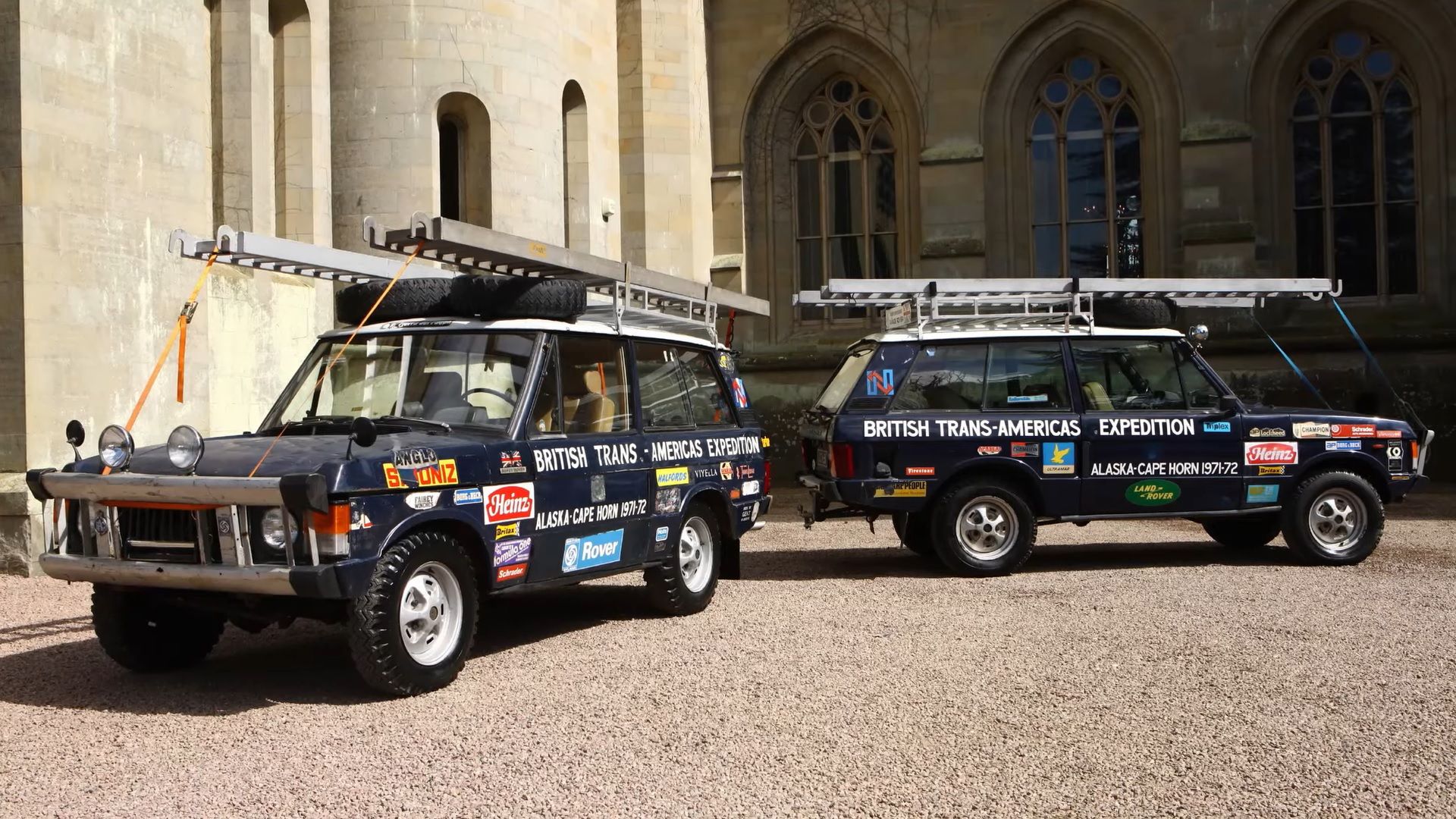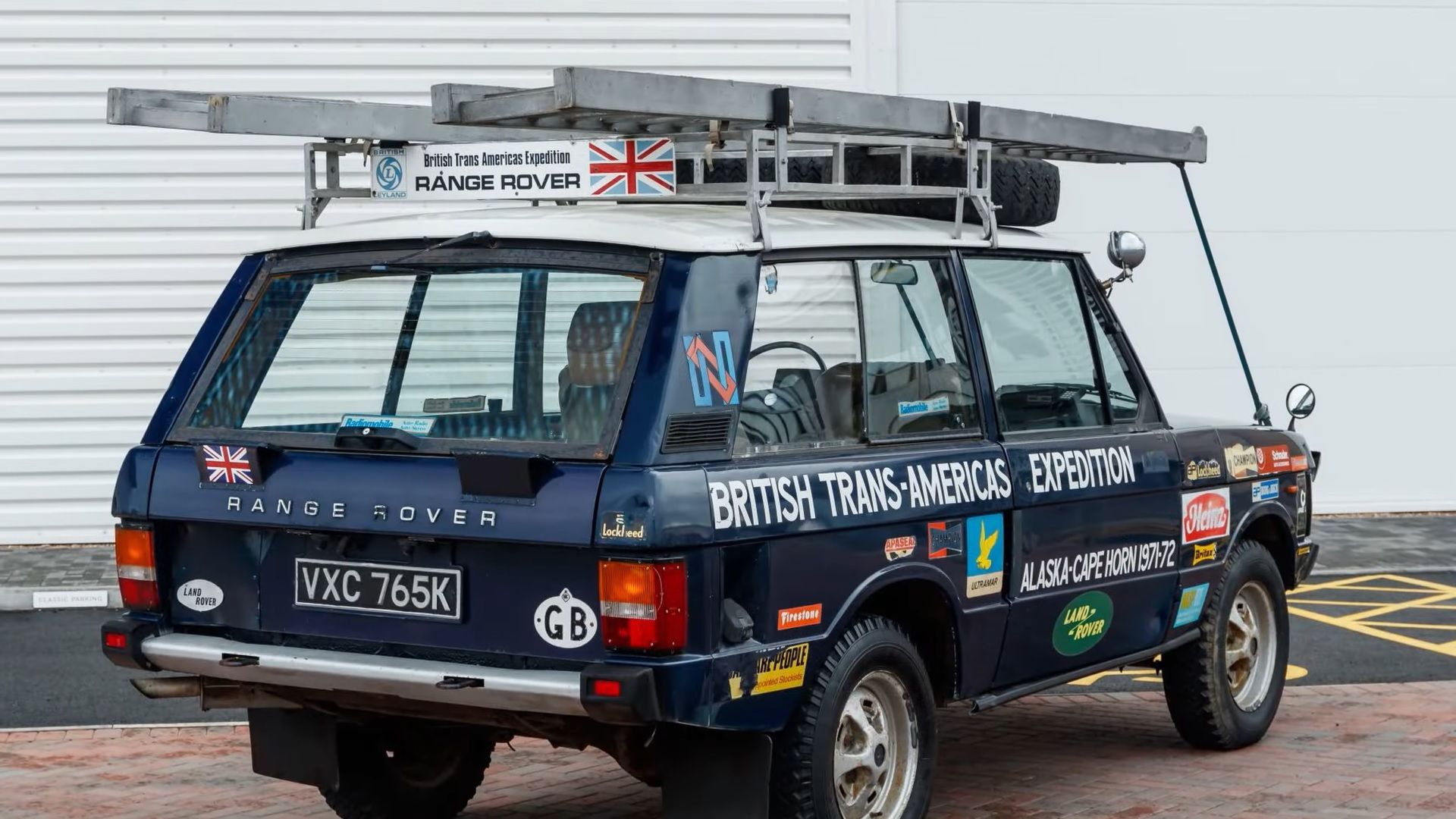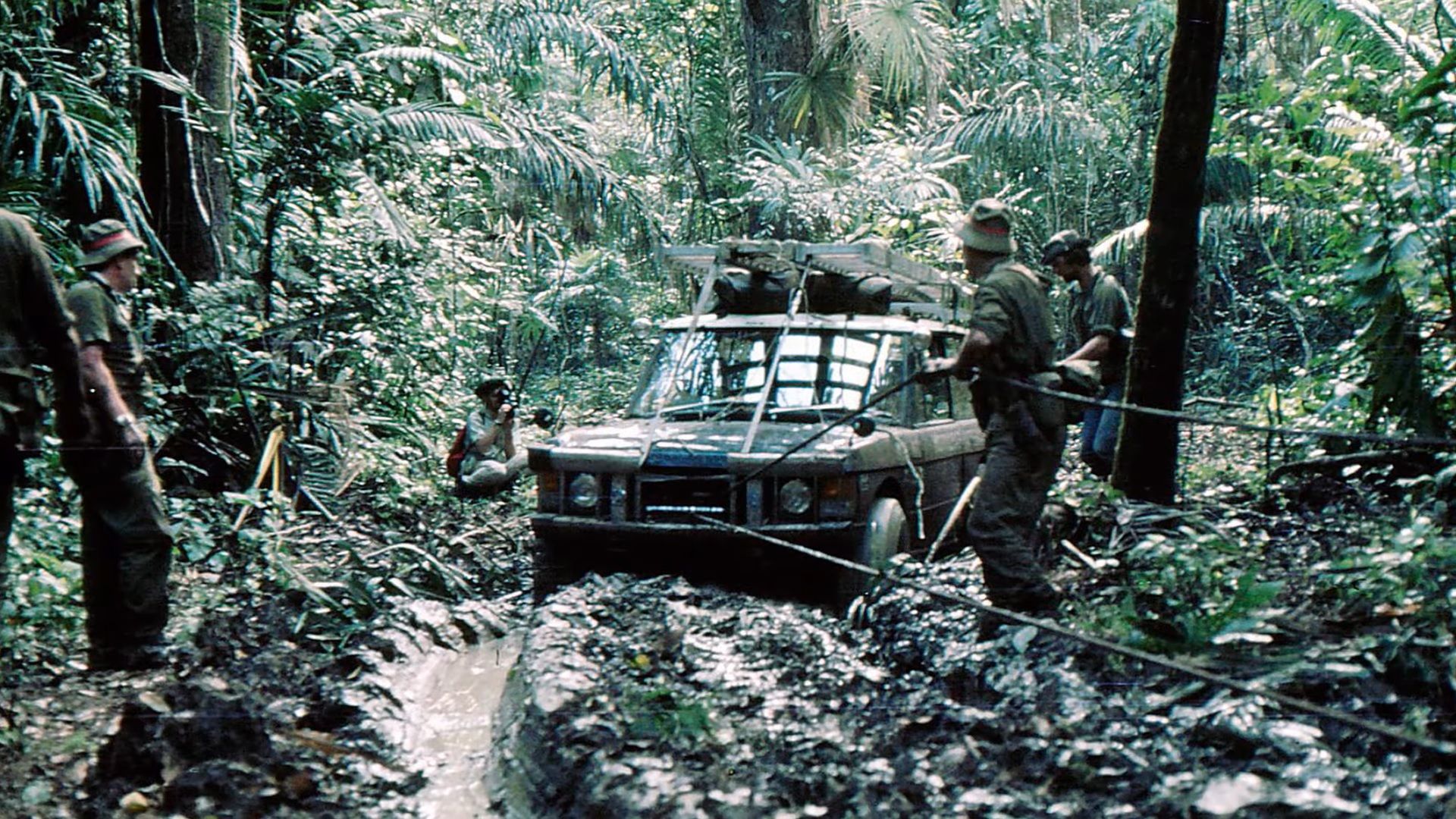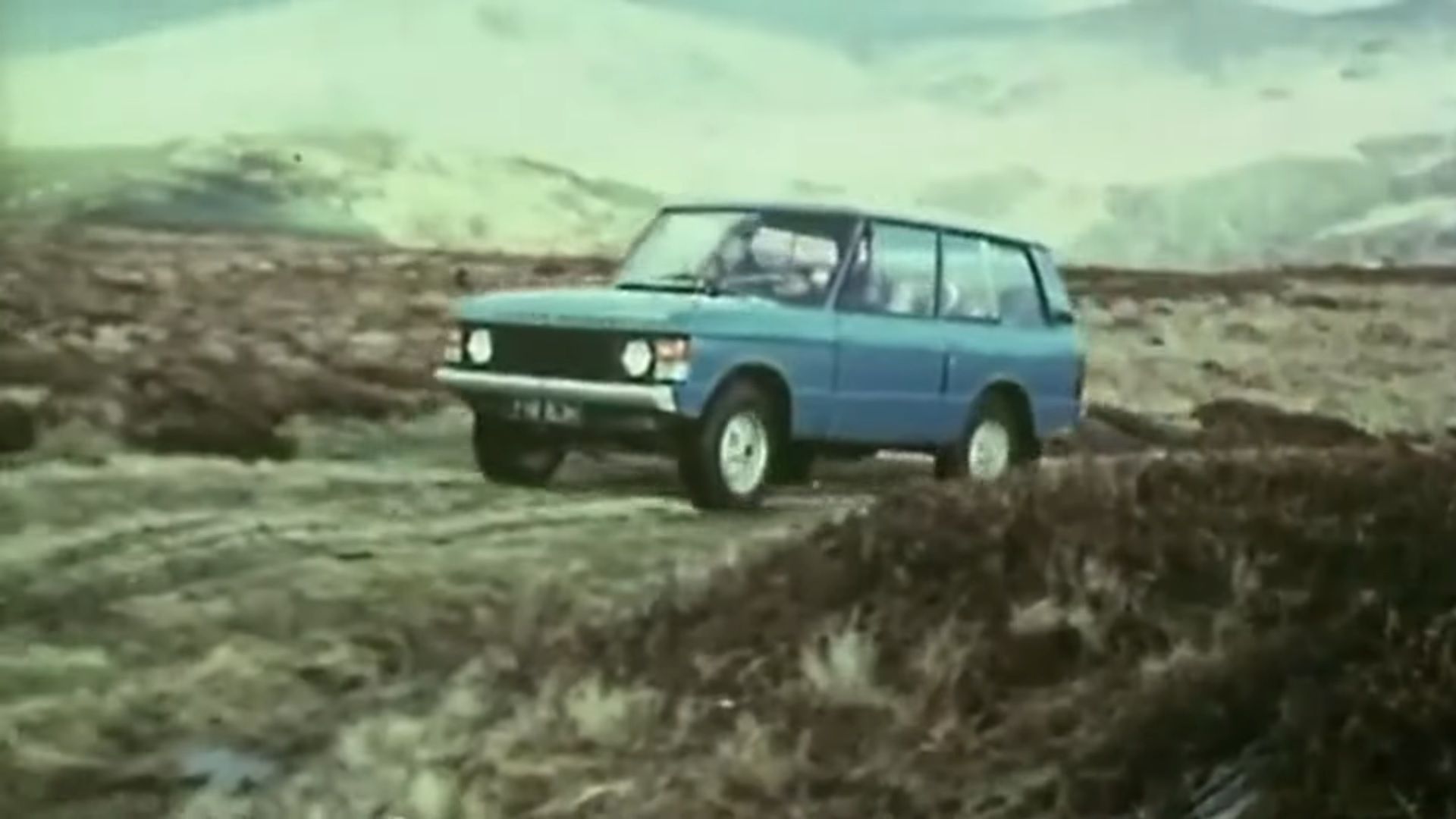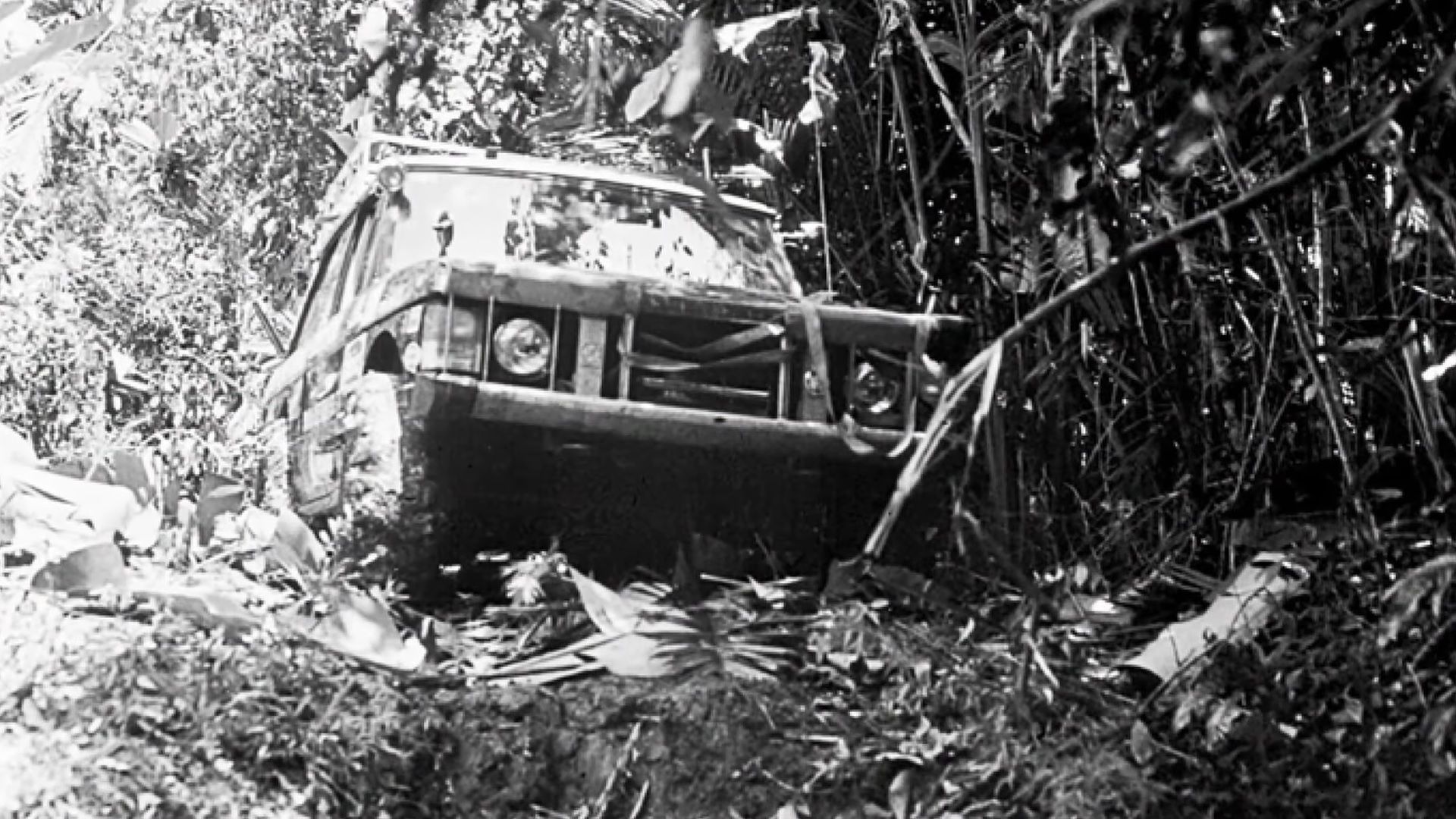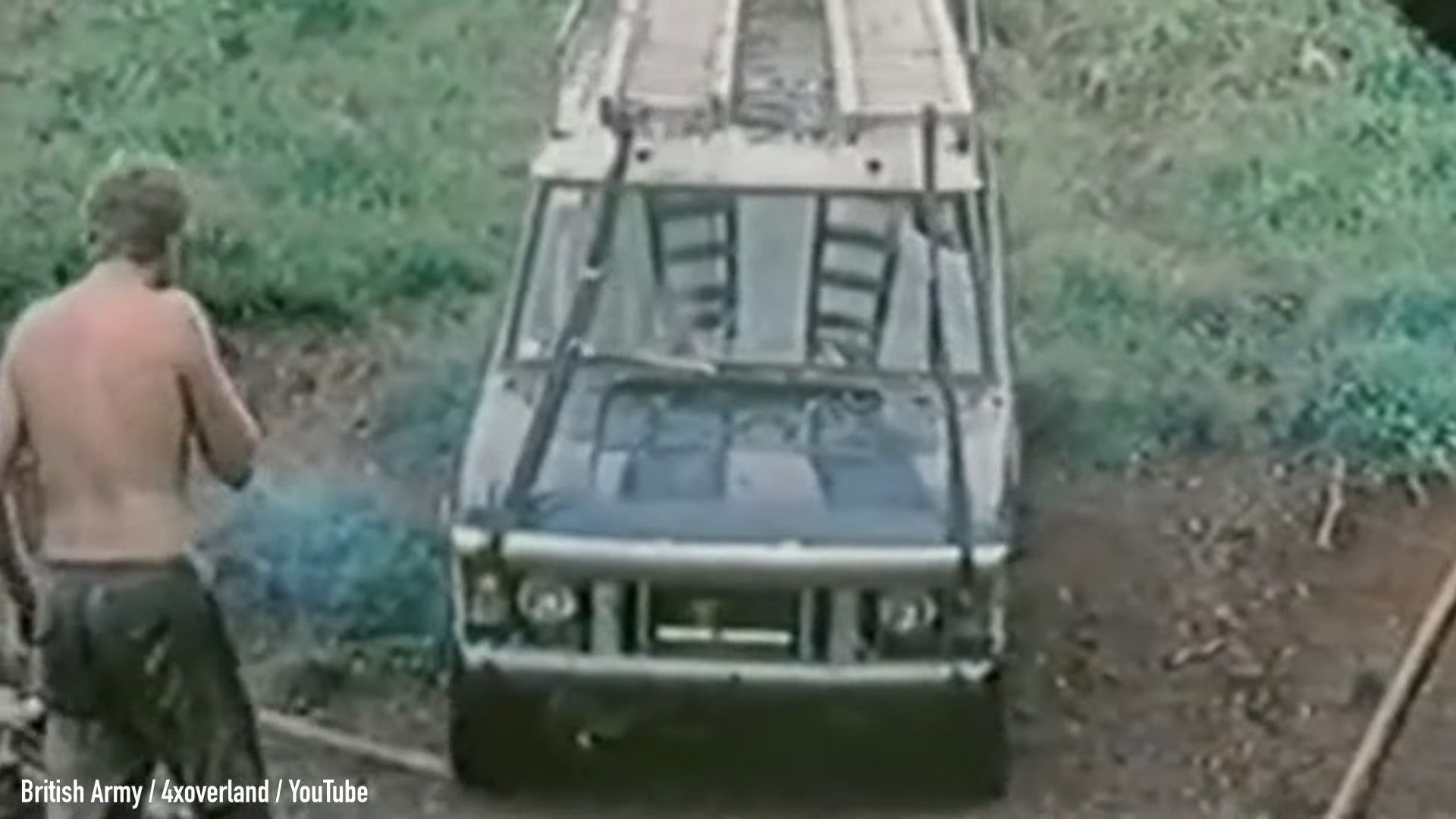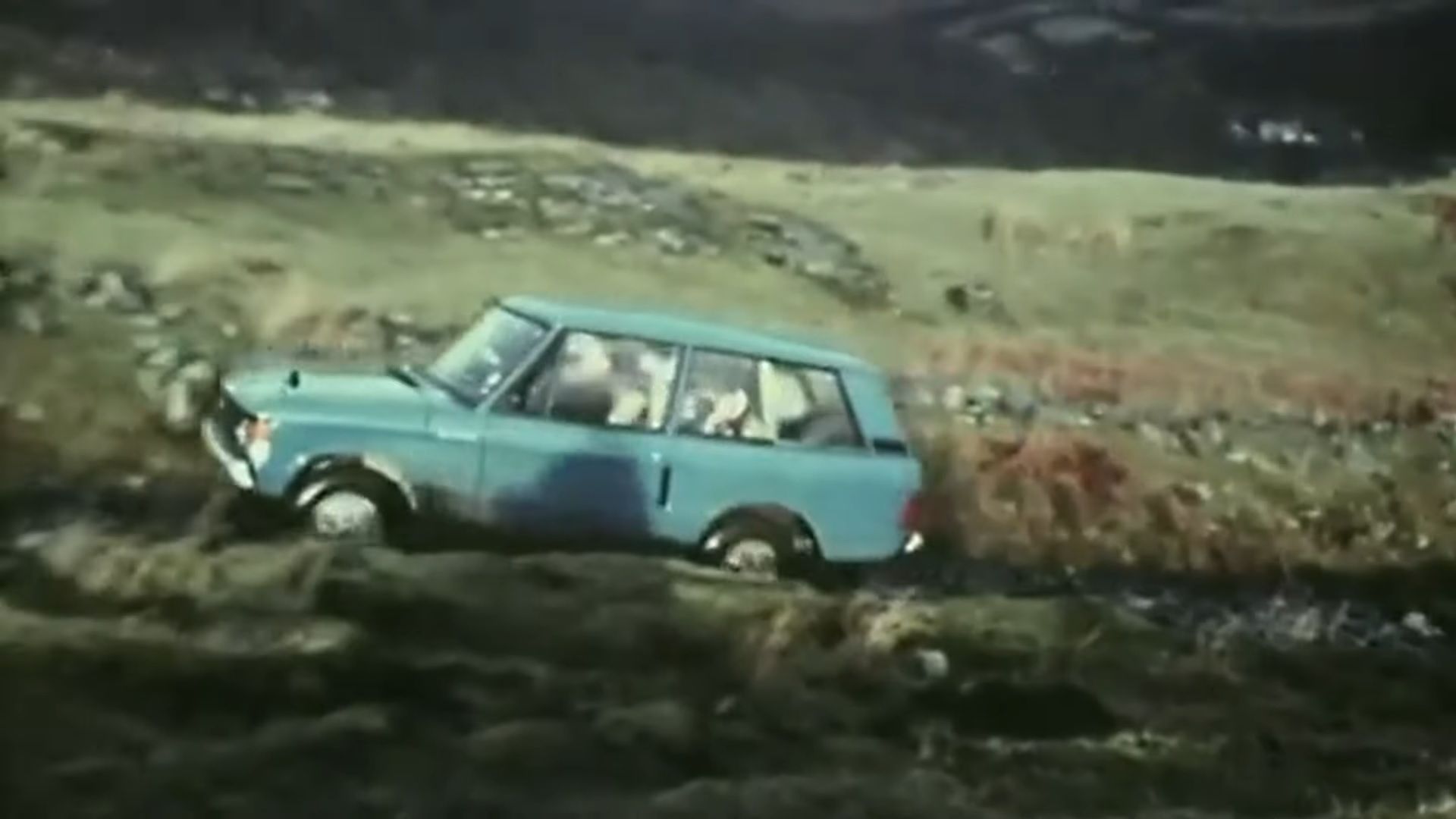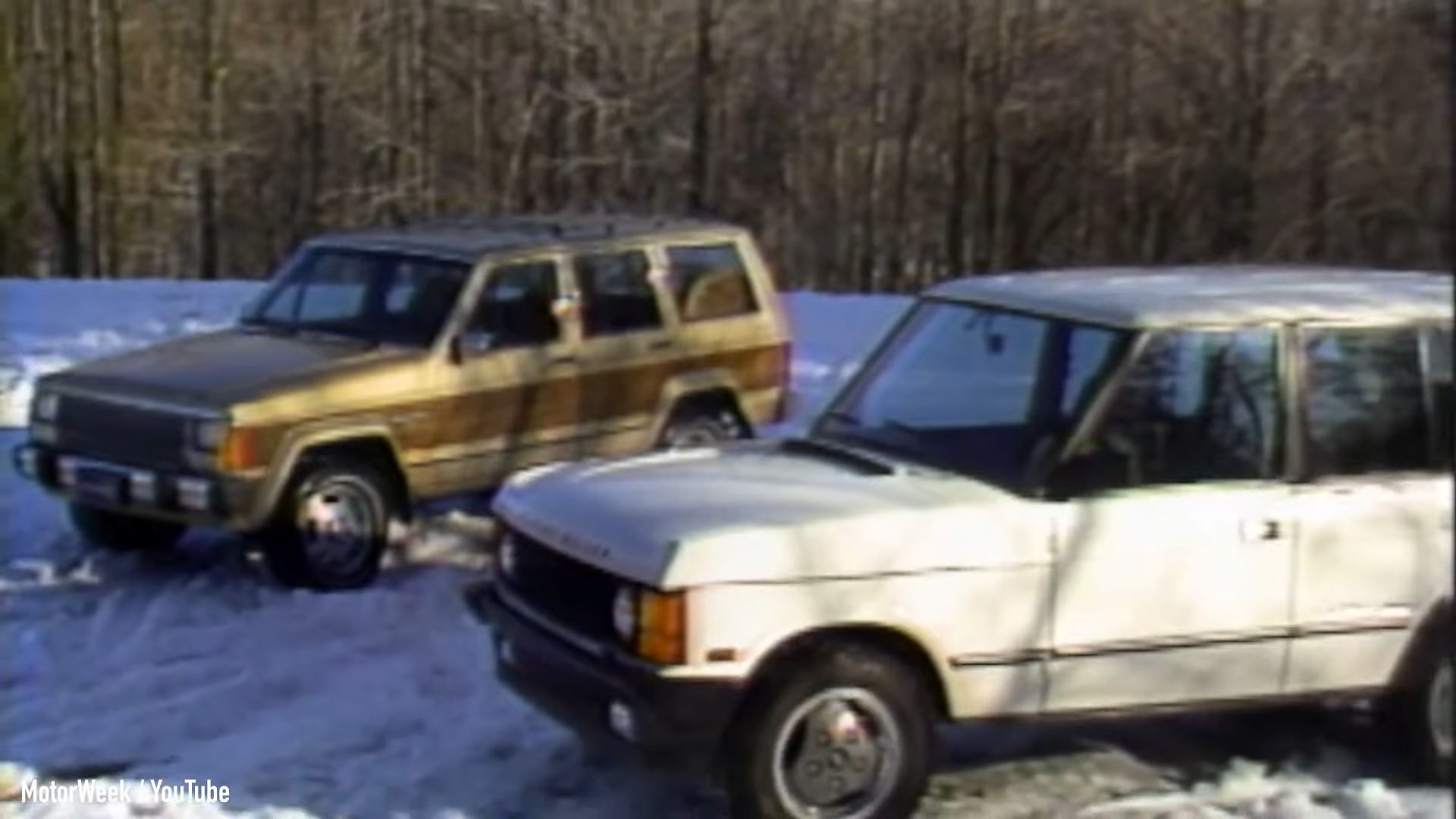Everybody knows that Range Rovers are unreliable, right? Well, I’m here to tell you a story that might just change your perspective a little bit. And it involves two, first-generation Range Rovers, 12-hours a day mud trekking, snakes, bats, a lot of sweat, about 80,000 cigarettes, and a long-lost Chevrolet Corvair.
Keep reading to find out the story of the British Trans-Americas Expedition, the first-ever successful vehicle-based traverse of the Pan-American Highway through the Darien Gap. It’s a story of grit, determination and ultimately, a lesson in PR that would be impossible to replicate today.
Introducing The Brand-New Range Rover
The year is 1970, and British Leyland is presenting the first-ever series production Range Rover to the world, a car that would later be defined as one of the first luxury SUVs, and a vehicle that will go on to define a whole social category. It will also be known for weak differentials that have a tendency to go BANG if you’re off-roading with big tires. But more on this later.
So the British had this really nice-looking and capable SUV, with permanent four-wheel drive and a Buick-derived, 3.5-liter V-8 engine under the hood. And with America wanting more and more of these upscale 4x4s, there was some business to be made on the other side of the pond. Thus, a plan that would get the new British SUV in front of as many Americans as possible was put in place. A plan so daring that nobody had ever succeeded before.
The Trans-Americas Expedition
The Trans-Americas Expedition was a huge undertaking that began in December of 1971, when a team of six men and their two Rovers were dropped by military Hercules airplanes into Anchorage, during the cold Alaskan winter.
The route towards the tip of South America began rather uneventful, with the two SUVs averaging 500 miles per day. But then a huge lorry that was blocking the way on the ice-bound Alcan highway in Canada almost led the expedition to a premature end, after one of the Range Rovers slid 600 feet and smashed into the truck. Luckily, the team was able to repair the vehicle and continue its route down South. But not without some help from back home.
Gavin Thompson, who would go on to wrestle both cars through the rough Darien Gap later on, worked with his team to haul the crashed car to Vancouver, where they waited a week for parts to arrive from England, and then straightened and rebuilt the Range Rover at a local Leyland dealer.
Fast forward to January 19, 1972, when the whole crew ventured into the jungle of Panama and got its first taste of the hellish Darien Gap, a 250 mile stretch of swamping rain forest with no roads and no bridges.
As you can imagine, this sort of undertaking meant the cars needed some upgrades in order to increase their chances of success. But it was nothing out of the ordinary - things like a winch, snorkel, bush bars made from two front bumpers, raised exhaust extension, heavy duty alternator, underbody protection, and swamp tires.
So the Rovers got basic upgrades that any off-road enthusiast would put on his own car if he went on an expedition, but the running gear was standard. What was less than standard was the immense team behind the expedition, with the British Army, and the Governments of Panama and Colombia playing a big role, supplying planes and boats for reconnaissance, technical support, food, beer and cigarettes.
A total of 64 men - drawn primarily from the Royal Engineers - were assembled by Major John Blashford-Snell to help with the Darien Gap crossing, as well as a number of scientists that went to study the local flora and fauna.
The aforementioned Gavin Thompson was tasked with piloting both cars through the thick of the jungle, and he found himself under the command of Royal Engineer Bob Russel, who would walk in front of the first vehicle as it crept its way ahead, spotting for blind cliffs and treacherous terrain. Thompson would drive the first car for a couple of feet, then move into the second Rover and maneuver it under the guidance of another Engineer, Michael Cross.
But the going got tough quick. While the initial team managed to average 500 miles a day from Alaska to Panama on paved roads, the Darien Gap, with its impassable foliage, slowed things down to a crawl. Literally.
The men had to sometimes endure 12 hours of mud, sweat, bats, snakes and crippling humidity every day. The temperature inside the vehicles frequently passed 140 degrees Fahrenheit or 60 degrees Celsius, and the constant wheeling, winching and path-cutting took a toll.
Some men had to be sent home because of diseases, while others had severe cases of jungle foot and were full of bite marks from unstoppable insects with an appetite for blood.
The Darian Pass Is No Joke
One of the reasons for this whole ordeal was that the rainy season was unusually longer, with rains falling for five more weeks than the norm, which meant the land was full of thick and sticky mud. The other reason is that the area is pretty much inhospitable, with only a handful of local tribes carrying on with their lives unhindered by the modern world. Well, until the British reached them, that is.
Some parts of the Darien Gap are crossed by fast flowing rivers, so the Expedition had sets of specially-made, aluminium ladders that were used as bridges to cross ravenes. They were also used as platforms atop the inflatable Avon rafts to cross rivers and other water obstacles.
And one such river crossing almost took one of the vehicles out of the game. While the first Range Rover crossed the water without issues in the evening, the second Rover was a little behind and had to be brought over the next morning. The problem was that during that night, a short but heavy rain made the small river much more fast flowing.
But even so, the team decided not to use the rafts, and officer Thompson nearly made it to the other side, when suddenly water started flowing over the hood. The engine was switched off, and the vehicle became a four-wheeled dam that raised the water above the roof.
As you can imagine, a complete bath isn’t exactly beneficial for a car, so the men pumped all the water out of the cylinders and every oil was flushed several times. After all this, the only thing that didn’t work was the radio. Talk about reliability, right?
Of course, none of this could have been possible without air support. Everything from oil, fuel, food, beer and cigarettes was air-dropped in the middle of the jungle. And now for those tires and differentials I mentioned at the beginning. You see, both Range Rovers were fitted with Firestone Super All-Traction swamp tires that were taller than the standard-fitted ones - so tall, in fact, that the expedition cars had removable wing panels for easier access.
The problem was that the tread was so aggressive that mud filled it almost instantly, and the extra weight of the wheels and mud led to the failure of not one, not two, but three differentials. The fact that the wrong gear oil was inside the axles didn’t help either, with even harder wear and excessive temperature buildup.
So after just 35 miles into the jungle, the rear diff on one of the Rovers snapped. The center differential was locked in order to provide power to the front wheels only, but with the car fully laden, the front diff broke as well. The team tried to haul the broken down Rover with the second vehicle, only to have another diff brake on this one as well. It was a disaster, but salvation came, once again, from the sky.
Officer Gavin Thompson, who was in charge of driving the vehicles, was flown out of the jungle to get in contact with Land Rover’s transmission expert to come up with a solution. So the Brits recreated the same conditions at Solihull in the UK and drove a Range Rover until its diff went out. The conclusion was that there was too much weight for the differentials to cope with when the big tires spun in the mud.
With this newly acquired knowledge and a load of new parts, Geoff Miller from Land Rover was flown into the Darien jungle, where the broken axles were replaced, the weight per vehicle was reduced, and the swamp tires were replaced with regular cross country ones. After this ordeal, there were no more diff problems, but it had pushed back the expedition by 26 days. Time was ticking.
But during this whole setback, the team managed to buy a second-hand Land Rover Series II in Panama, which acted as a pathfinder for tracks. So after the two Range Rovers were back in top shape, and after extra long day sessions, the expedition was back on schedule, despite even worse terrain ahead.
One of the most interesting things found towards the end of the Darien Gap was a Chevrolet Corvair of all things. Ten years earlier, at the beginning of the ‘60s, Chevy sent three Corvairs to the Gap, but only two of them survived, apparently. They were two-wheel-drive compact cars, after all.
But the end of the most extreme part of the journey was near. After crossing the 60-miles wide Great Atrato swamp and river, the team was seeing the light at the end of the tunnel.
After the Range Rovers got a thorough service at the British Leyland agent in Bogota, the expedition continued further South, this time in slim formation, without all the scientists and Royal Engineers that forged paths and trekked through the jungle. The same six-man team that landed in Anchorage in December of 1971 was in a hurry to get to Cape Horn, because they had a plane to catch back home.
So they put their foot down and drove at 90 to 100 mph through Chile, covering 800 miles per day, before hitting snow-covered roads in Patagonia. But eventually, in June of 1972, six months after their departure in Alaska, the two Range Rovers reached their destination - the southernmost tip of South America. Gavin Thompson’s team opened a bottle of champagne, had a quick smoke, and then hurried back to Buenos Aires to catch their flight home, for which they paid five pounds each.
What Was The Purpose of the Trans-Americas Expedition?
The British Trans-Americas Expedition was, in my view, the most ambitious road trip in history, and one that’s impossible to recreate today. Its initial goal was to convince several nations to finish the Pan-American highway, so that it would be possible to drive any car across it. But because of environmental concerns, the paving of the Darien Gap never came to fruition.
Another goal was to attract the attention of the American buyer, but as it turned out, Land Rover managed to officially sell the first Range Rover in the USA not one, not two, but 15 years later, in 1987.
In the end, the team went through 10 tons of food rations, 15,000 gallons of fuel, 2,400 cans of beer, and 80,000 cigarettes, among other things. Through the Darien Gap, the fuel consumption was just 1 mile per gallon, but that eventually improved on the higher-speed sections. Nowadays, one of the Range Rovers is at the Dunsfold Collection in the South of England, while the other one is at the Gaydon Motor Museum.
It’s a fascinating story that just shows how far people are willing to go to challenge their limits. And with all this said and done, what are your thoughts on the whole adventure and the good old Range Rover? Let me know what you think in the comments below.

